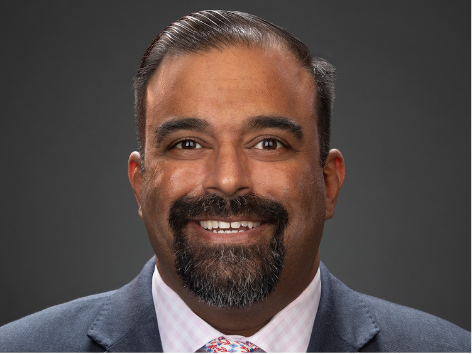Preparing for future concepts in terrorism: Non-kinetic acts and decentralization
Twenty years ago, on September 11, 2001, the world saw a coordinated attack on the United States that struck us as “unimaginable” at the time. Yet as experts began to dig, the scope, targeting, invasiveness, coordinated planning, and myriad other factors in the 9/11 attacks revealed that the individual elements were not only imaginable, but had precedents or exploited weaknesses that should have been apparent from twentieth-century terrorist attacks.
As the United States looks to the “next form of terrorism” threatening the world order, it too will likely be grounded in precedent, with known elements leveraged in novel ways. The two avenues future terrorists will increasingly leverage are non-kinetic acts (NKAs) and decentralization, due to the perceived efficacy of both, and the ability of these approaches to evade many current best practices of forensics and attribution.
- Non-Kinetic Acts
NKAs are those terror activities that do not rely on the use of kinetic energy effects such as bombings, hijackings, or shootings. NKAs instead use other means to achieve their objectives—consider, for example, cyberattacks, information operations, and bioterrorism. NKAs are not traditionally associated with terrorism due to the higher levels of sophistication and coordination required to successfully execute such attacks, which are more typically associated with high-end state actors, or at least state sponsorship. Yet, as learned in the aftermath of 9/11, terrorist organizations can conduct intelligence and related activities. It was only in hindsight that experts learned that terrorist organizations had demonstrated the needed levels of sophistication and coordination going back at least twenty years—but governments had missed the signs.
NKAs also offer terrorist organizations activities that are impactful, disruptive, and damaging at a broad level while not carrying the same perceived stigma of a hijacking, suicide bombing, or active shooter. Because the public does not see a body count of women and children—or even blood, for that matter—NKAs offer mitigation of a notable threat to terrorist organizations: revulsion by the local civilian hearts and minds whose support gives terrorists a safe haven. NKAs can still strike at the hearts of those with power who are the targets of terrorists’ actions.
- Cyber
There is now near-universal awareness of the devastation cyberattacks can inflict on things society otherwise takes for granted, such as financial systems, energy, food security, and even power to our homes. To that list we need to add the vulnerabilities introduced by our increasing everyday reliance on the Internet of Things (IoT), which creates a weakness that bad actors can target to put ordinary lives into disarray or even physical danger. Some vulnerabilities are current headline news, such as the SolarWinds hack, the Colonial Pipeline ransomware attack, and the JBS SA cyberattacks. Such attacks are frequently attributable to hostile nation-states (Russia, China, or Iran.) With barriers to entry getting progressively lower, why would a terrorist organization kidnap for ransom when it could wreak broader havoc with higher potential gain and lower risk by holding cyber infrastructure hostage, all while reducing the risk of kinetic repercussions from the United States and its allies?
- Information operations
Since the 1970s, international terrorist organizations have consistently attempted to use the information domain to further their objectives. The prevalence of social media channels has provided such organizations greater control over their messaging—for example, ISIS’s use of social media for propaganda, recruiting, and amplification of the social impact of its kinetic activities. In looking at the (d)evolution of the information environment starting in the latter half of the 2010s, terrorist organizations now have an increased ability to take advantage of the information domain and can use it to exploit societal vulnerabilities, again with lowered barriers to entry. If we look at WikiLeaks and similar outlets, we can further note that such channels can be used for information operations or other disruptive purposes that deliver real non-kinetic effects against their targets.
- Bioterrorism
Biological agents have consistently garnered attention from international terrorist organizations due to their effectiveness and relative affordability as a weapon of mass destruction (WMD). In looking at the level of global disruption caused by the COVID-19 pandemic, it is easily conceivable that terrorist organizations will energize their efforts in this area. Bioterrorism’s disruptive effects would be non-kinetic in nature, causing economic and social damage, as the COVID-19 pandemic has amply demonstrated.
These NKAs alter or blur the lines of traditional targets for a terrorist organization, compared to traditional kinetic activities such as bombs and explosives, since targets can be physically distant, dispersed, or aggregated, and entirely opportunistic, while still being high-value to a terrorist organization.
- Decentralization
Terrorist organizations will also increasingly leverage decentralization to achieve their objectives in the near future. Decentralization represents those mechanisms and relationships that allow terrorists to spread their activities, evading some of the traditional means that global security organizations use to detect and thwart terrorist activities. Like NKAs, decentralization exists in several domains.
Terrorism only exists where it is given a safe harbor through either popular support or, at least, benevolent neglect. If the United States can deny safe harbor in the spaces of NKAs and decentralization, it will be better equipped to leverage its own and allies’ tools to thwart future terrorism.
- Decentralized Finance (DeFi)
Counterterrorism experts have long been familiar with hawala networks and their role not just in traditional, small-scale international finance but also the special benefits their decentralization provides to those seeking to evade detection. Similarly, the increased use of blockchains and cryptocurrency, though trackable (as evidenced by the recovery of the Colonial Pipeline ransom), offers terrorists opportunities through inconsistent global regulation. It also offers them the ability to transfer value without being beholden to sovereign currencies, particularly in those countries where the banking systems are on the lookout for terrorists attempting to move money.
- Remotely piloted vehicles (RPVs)
Previous terrorist attacks have already harnessed commercially available aerial platforms (i.e., drones) that provide their personnel a safe distance from the kinetic repercussions of their attacks, as recently indicated by attacks against the US Embassy in Baghdad and other locations. Terrorist organizations can be expected to increase their use of these capabilities, which provide “force protection” benefits for their operators, as they become cheaper and more accessible.
- Communications enabling decentralized organizations
Given their current capabilities to communicate, recruit, and coordinate using social media and the dark web, terrorists will likely place a greater emphasis on loose affiliations and coordination—rather than command and control—to conduct international terrorism. This may look similar to current affiliations among international far-right extremist groups, or even Marxist-Socialist terrorist groups of the Cold War like the Baader-Meinhof Gang, with smaller cells that are independent and affiliated rather than a large organization with an identifiable footprint.
There are also increasing signs of a “privateer” construct, in which small terrorist organizations carry out NKAs with the quiet but deniable sanction of a nation-state. These privateers have what is roughly analogous to the letters ofmarque tantamount to state-sponsored piracy and counter-piracy in the colonial period or even the contracted terrorism of the 1970s and 1980s conducted by Ilich Ramírez Sánchez, known as Carlos the Jackal. For NKAs, particularly in the cyber domain, such terrorism could be contracted and paid for using DeFi.
What can be done to counter these threats? In the days and years following 9/11, the United States and its allies urged their publics that “If you see something, say something.” While this will not be a complete answer to deterring and disrupting the next form of terrorism, a refreshed and reenergized version of this approach would be an effective part of a whole-of-society approach against the next forms of terrorism. Terrorism only exists where it is given a safe harbor through either popular support or, at least, benevolent neglect. If the United States can deny safe harbor in the spaces of NKAs and decentralization, it will be better equipped to leverage its own and allies’ tools to thwart future terrorism. Additionally, the United States and its allies must also develop doctrines of response that legally and ethically adhere to proportionality while serving as effective deterrents to terrorists using NKAs.
The views expressed in this article are those of the author and do not reflect the official policy or position of the Department of Defense or US government.
* * *

Arun Iyer is a nonresident senior fellow at the Atlantic Council’s Scowcroft Center for Strategy and Security in the Forward Defense program. Additionally, Iyer is currently the chief investment officer of a family office focused on management, oversight, and strategy of global investments in public and private equity, philanthropy, and other issues. Iyer holds several leadership and oversight positions in both non-profit and for-profit organizations, including as a board member of Outthinker, a growth strategy consulting firm. From 2005 to 2020, Iyer served in a variety of operational and operational leadership assignments covering Europe, the Middle East, and the Indo-Pacific in the US Department of Defense including tours as an attaché, national agency representative, and twice in command positions in Iraq. Prior to his government service, Iyer worked in the financial services industry, in both buy- and sell-side roles focused on the United States and Central Europe from 1994 to 2005. Following the terrorist attacks of 9/11, Iyer was commissioned as an intelligence officer in the US Navy and currently serves as a Commander in the Reserve component. Iyer has served in a broad range of assignments up to and including commanding officer with qualifications that include intelligence officer, information warfare officer, and joint qualified officer. Iyer holds both Bachelor’s and Master’s degrees from the University of Pennsylvania.
Generously Supported By

Explore “The future of counterterrorism” series
Engage with our series as we continue forecasting the future of counterterrorism
Learn more about the Middle East Programs
Learn more about Forward Defense

Forward Defense, housed within the Scowcroft Center for Strategy and Security, generates ideas and connects stakeholders in the defense ecosystem to promote an enduring military advantage for the United States, its allies, and partners. Our work identifies the defense strategies, capabilities, and resources the United States needs to deter and, if necessary, prevail in future conflict.